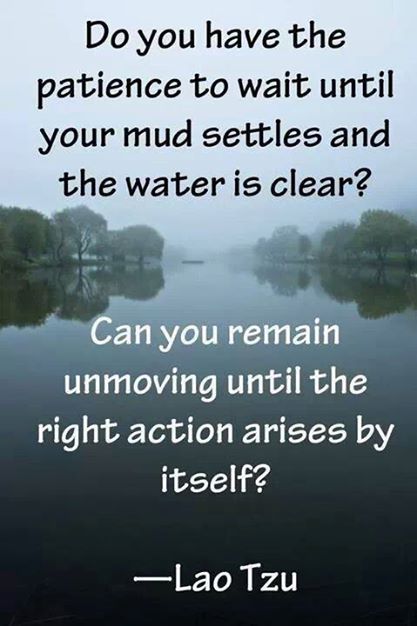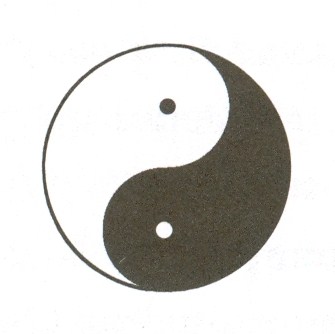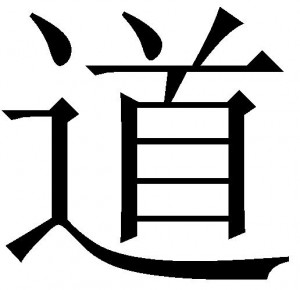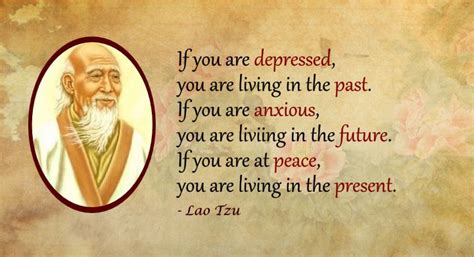|
home | what's new | other sites | contact | about |
||
|
Word Gems exploring self-realization, sacred personhood, and full humanity
Lao Tzu What is Daoism?
from https://www.worldhistory.org/Taoism/ Taoism (also known as Daoism) is a Chinese philosophy attributed to Lao Tzu (c. 500 BCE) which developed from the folk religion of the people primarily in the rural areas of China and became the official religion of the country under the Tang Dynasty. Taoism is therefore both a philosophy and a religion. It emphasizes doing what is natural and "going with the flow" in accordance with the Tao (or Dao), a cosmic force which flows through all things and binds and releases them. The philosophy grew from an observance of the natural world, and the religion developed out of a belief in cosmic balance maintained and regulated by the Tao. The original belief may or may not have included practices such as ancestor and spirit worship but both of these principles are observed by many Taoists today and have been for centuries. Taoism exerted a great influence during the Tang Dynasty (618-907 CE) and the emperor Xuanzong (reigned 712-756 CE) decreed it a state religion, mandating that people keep Taoist writings in their home. It fell out of favor as the Tang Dynasty declined and was replaced by Confucianism and Buddhism but the religion is still practiced throughout China and other countries today. The historian Sima Qian (145-86 BCE) tells the story of Lao-Tzu, a curator at the Royal Library in the state of Chu, who was a natural philosopher. Lao-Tzu believed in the harmony of all things and that people could live easily together if they only considered each other's feelings once in a while and recognized that their self-interest was not always in the interest of others. Lao-Tzu grew impatient with people and with the corruption he saw in government, which caused the people so much pain and misery. He was so frustrated by his inability to change people's behavior that he decided to go into exile. As he was leaving China through the western pass, the gatekeeper Yin Hsi stopped him because he recognized him as a philosopher. Yin Hsi asked Lao-Tzu to write a book for him before he left civilization forever and Lao-Tzu agreed. He sat down on a rock beside the gatekeeper and wrote the Tao-Te-Ching (The Book of the Way). He stopped writing when he felt he was finished, handed the book to Yin Hsi, and walked through the western pass to vanish into the mist beyond. Sima Qian does not continue the story after this but, presumably (if the story is true) Yin Hsi would have then had the Tao-Te-Ching copied and distributed. The Tao-Te-Ching The Tao-Te-Ching is an attempt to remind people everyone could live together peacefully if people would only be mindful of how their thoughts and actions affect themselves, others, and the earth. The Tao-Te-Ching is not a 'scripture' in any way. It is a book of poetry presenting the simple way of following the Tao and living life at peace with one's self, others, and the world of changes. A typical verse advises, "Yield and overcome/Empty and become full/Bend and become straight" to direct a reader to a simpler way of living. Instead of fighting against life and others, one can yield to circumstances and let the things which are not really important go. Instead of insisting one is right all the time, one can empty one's self of that kind of pride and be open to learning from other people. Instead of clinging to old belief patterns and hanging onto the past, one can bend to new ideas and new ways of living. The Tao-Te-Ching was most likely not written by Lao-Tzu at the western pass and may not have been written by him at all. Lao-Tzu probably did not exist and the Tao-Te-Ching is a compilation of sayings set down by an unknown scribe. Whether the origin of the book and the belief system originated with a man named Lao-Tzu or when it was written or how is immaterial (the book itself would agree) and all that matters is what the work says and what it has come to mean to readers. The Tao-Te-Ching is an attempt to remind people that they are connected to others and to the earth and that everyone could live together peacefully if people would only be mindful of how their thoughts and actions affect themselves, others, and the earth. Yin-Yang Thought A good reason to believe that Lao-Tzu was not the author of the Tao-Te-Ching is that the core philosophy of Taoism grew up from the peasant class during the Shang Dynasty (1600-1046 BCE) long before the accepted dates for Lao-Tzu. During the Shang era, the practice of divination became more popular through the reading of oracle bones which would tell one's future. Reading oracle bones led to a written text called the I-Ching (c. 1250-1150 BCE), the Book of Changes, which is a book still available today providing a reader with interpretations for certain hexagrams which supposedly tell the future. A person would ask a question and then throw a handful of yarrow sticks onto a flat surface (such as a table) and the I-Ching would be consulted for an answer to the person's question. These hexagrams consist of six unbroken lines (called Yang lines) and six broken lines (Yin). When a person looked at the pattern the yarrow sticks made when they were thrown, and then consulted the hexagrams in the book, they would have their answer. The broken and the unbroken lines, the yin and yang, were both necessary for that answer because the principles of yin and yang were necessary for life. Historian John M. Koller writes: Yin-yang thought began as an attempt to answer the question of the origin of the universe. According to yin-yang thought, the universe came to be as a result of the interactions between the two primordial opposing forces of yin and yang. Because things are experienced as changing, as processes coming into being and passing out of being, they must have both yang, or being, and yin, or lack of being. The world of changing things that constitutes nature can exist only when there are both yang and yin. Without yang nothing can come into existence. Without yin nothing can pass out of existence (207).
Although Taoism and the Tao-Te-Ching were not originally associated with the symbol known as the yin-yang, they have both come to be because the philosophy of Taoism embodies the yin-yang principle and yin-yang thought. Life is supposed to be lived in balance, as the symbol of the yin and the yang expresses. The yin-yang is a symbol of opposites in balance - dark/light, passive/aggressive, female/male - everything except good and evil, life and death, because nature does not recognize anything as good or evil and nature does not recognize a difference between life and non-life. All is in harmony in nature, and Taoism tries to encourage people to accept and live that kind of harmony as well. Other Chinese texts relating to Taoism are the Chaung-Tzu (also known as the Zhuangzi, written by Zhuang Zhou, c. 369-286 BCE) and the Daozang from the Tang Dynasty (618-907 CE) and Sung Dynasty (960-1234 CE) which was compiled in the later Ming Dynasty (1368-1644 CE). All of these texts are based on the same kinds of observation of the natural world and the belief that human beings are innately good and only needed a reminder of their inner nature to pursue virtue over vice. There are no "bad people" according to Taoist principles, only people who behave badly. Given the proper education and guidance toward understanding how the universe works, anyone could be a "good person" living in harmony with the earth and with others. According to this belief, the way of the Tao is in accordance with nature while resistance to the Tao is unnatural and causes friction. The best way for a person to live, according to Taoism, is to submit to whatever life brings and be flexible. If a person adapts to the changes in life easily, that person will be happy; if a person resists the changes in life, that person will be unhappy. One's ultimate goal is to live at peace with the way of the Tao and recognize that everything that happens in life should be accepted as part of the eternal force which binds and moves through all things.
from https://iep.utm.edu/daoismdaoist-philosophy/ Daoist PhilosophyAlong with Confucianism, “Daoism” (sometimes called “Taoism“) is one of the two great indigenous philosophical traditions of China. As an English term, Daoism corresponds to both Daojia (“Dao family” or “school of the Dao”), an early Han dynasty (c. 100s B.C.E.) term which describes so-called “philosophical” texts and thinkers such as Laozi and Zhuangzi, and Daojiao (“teaching of the Dao”), which describes various so-called “religious” movements dating from the late Han dynasty (c. 100s C.E.) onward. Thus, “Daoism” encompasses thought and practice that sometimes are viewed as “philosophical,” as “religious,” or as a combination of both. While modern scholars, especially those in the West, have been preoccupied with classifying Daoist material as either “philosophical” or “religious,” historically Daoists themselves have been uninterested in such categories and dichotomies. Instead, they have preferred to focus on understanding the nature of reality, increasing their longevity, ordering life morally, practicing rulership, and regulating consciousness and diet. Fundamental Daoist ideas and concerns include wuwei (“effortless action”), ziran (“naturalness”), how to become a shengren (“sage”) or zhenren (“perfected person”), and the ineffable, mysterious Dao (“Way”) itself. What is Daoism?Strictly speaking there was no Daoism before the literati of the Han dynasty (c. 200 B.C.E.) tried to organize the writings and ideas that represented the major intellectual alternatives available. The name daojia, “Dao family” or “school of the dao” was a creation of the historian Sima Tan (d. 110 B.C.E.) in his Shi ji (Records of the Historian) written in the 2nd century B.C.E. and later completed by his son, Sima Qian (145-86 B.C.E.). In Sima Qian’s classification, the Daoists are listed as one of the Six Schools: Yin-Yang, Confucian, Mohist, Legalist, School of Names, and Daoists. So, Daoism was a retroactive grouping of ideas and writings which were already at least one to two centuries old, and which may or may not have been ancestral to various post-classical religious movements, all self-identified as daojiao (“teaching of the dao“), beginning with the reception of revelations from the deified Laozi by the Celestial Masters (Tianshi) lineage founder, Zhang Daoling, in 142 C.E.This article privileges the formative influence of early texts, such as the Daodejing and the Zhuangzi, but accepts contemporary Daoists’ assertion of continuity between classical and post-classical, “philosophical” and “religious” movements and texts. The DaodejingThe Daodejing (hereafter, DDJ) is divided into 81 “chapters” consisting of slightly over 5,000 Chinese characters, depending on which text is used. In its received form from Wang Bi (see below), the two major divisions of the text are the dao jing (chs. 1-37) and the de jing (chs. 38-81). Actually, this division probably rests on little else than the fact that the principal concept opening Chapter 1 is dao (way) and that of Chapter 38 is de (virtue). The text is a collection of short aphorisms that were not arranged to develop any systematic argument. The long standing tradition about the authorship of the text is that the “founder” of Daoism, known as Laozi gave it to Yin Xi, the guardian of the pass through the mountains that he used to go from China to the West (i.e., India) in some unknown date in the distant past. But the text is actually a composite of collected materials, most of which probably originally circulated orally perhaps even in single aphorisms or small collections. These were then redacted as someone might string pearls into a necklace. Although D.C. Lau and Michael LaFargue had made preliminary literary and redaction critical studies of the texts, these are still insufficient to generate any consensus about whether the text was composed using smaller written collections or who were the probable editors. Fundamental Concepts in the DaodejingThe term Dao means a road, and is often translated as “the Way.” This is because sometimes dao is used as a nominative (that is, “the dao”) and other times as a verb (i.e. daoing). Dao is the process of reality itself, the way things come together, while still transforming.
All this reflects the deep seated Chinese belief that change is the most basic character of things. In the Yi jing (Classic of Change) the patterns of this change are symbolized by figures standing for 64 relations of correlative forces and known as the hexagrams. Dao is the alteration of these forces, most often simply stated as yin and yang. The Xici is a commentary on the Yi jing formed in about the same period as the DDJ. It takes the taiji (Great Ultimate) as the source of correlative change and associates it with the dao. The contrast is not between what things are or that something is or is not, but between chaos (hundun) and the way reality is ordering (de). Yet, reality is not ordering into one unified whole. It is the 10,000 things (wanwu). There is the dao but not “the World” or “the cosmos” in a Western sense. The Daodejing teaches that humans cannot fathom the Dao, because any name we give to it cannot capture it. It is beyond what we can express in language (ch.1). Those who experience oneness with dao, known as “obtaining dao,” will be enabled to wu-wei . Wu-wei is a difficult notion to translate. Yet, it is generally agreed that the traditional rendering of it as “nonaction” or “no action” is incorrect. Those who wu wei do act. Daoism is not a philosophy of “doing nothing.” Wu-wei means something like “act naturally,” “effortless action,” or “nonwillful action.” The point is that there is no need for human tampering with the flow of reality. Wu-wei should be our way of life, because the dao always benefits, it does not harm (ch. 81) The way of heaven (dao of tian) is always on the side of good (ch. 79) and virtue (de) comes forth from the dao alone (ch. 21). What causes this natural embedding of good and benefit in the dao is vague and elusive (ch. 35), not even the sages understand it (ch. 76). But the world is a reality that is filled with spiritual force, just as a sacred image used in religious ritual might be inhabited by numinal power (ch. 29). The dao occupies the place in reality that is analogous to the part of a family’s house set aside for the altar for venerating the ancestors and gods (the ao of the house, ch. 62). When we think that life’s occurrences seem unfair (a human discrimination), we should remember that heaven’s (tian) net misses nothing, it leaves nothing undone (ch. 37) A central theme of the Daodejing is that correlatives are the expressions of the movement of dao. Correlatives in Chinese philosophy are not opposites, mutually excluding each other. They represent the ebb and flow of the forces of reality: yin/yang, male/female; excess/defect; leading/following; active/passive. As one approaches the fullness of yin, yang begins to horizon and emerge and vice versa. Its teachings on correlation often suggest to interpreters that the DDJ is filled with paradoxes. For example, ch. 22 says, “Those who are crooked will be perfected. Those who are bent will be straight. Those who are empty will be full.” While these appear paradoxical, they are probably better understood as correlational in meaning. The DDJ says, “straightforward words seem paradoxical,” implying, however, that they are not (ch. 78). What is the image of the ideal person, the sage (sheng ren), or the perfected person (zhen ren) in the DDJ? Well, sages wu-wei, (chs. 2, 63). They act effortlessly and spontaneously as one with dao and in so doing, they “virtue” (de) without deliberation or volitional challenge. In this respect, they are like newborn infants, who move naturally, without planning and reliance on the structures given to them by culture and society (ch. 15). The DDJ tells us that sages empty themselves, becoming void of the discriminations used in conventional language and culture. Sages concentrate their internal energies (qi). They clean their vision (ch. 10). They manifest naturalness and plainness, becoming like uncarved wood (pu) (ch. 19). They live naturally and free from desires rooted in the discriminations that human society makes (ch. 37) They settle themselves and know how to be content (ch. 46). The DDJ makes use of some very famous analogies to drive home its point. Sages know the value of emptiness as illustrated by how emptiness is used in a bowl, door, window, valley or canyon (ch. 11). They preserve the female (yin), meaning that they know how to be receptive to dao and its power (de) and are not unbalanced favoring assertion and action (yang) (ch. 28). They shoulder yin and embrace yang, blend internal energies (qi) and thereby attain harmony (he) (ch. 42). Those following the dao do not strive, tamper, or seek to control their own lives (ch. 64). They do not endeavor to help life along (ch. 55), or use their heart-mind (xin) to “solve” or “figure out” life’s apparent knots and entanglements (ch. 55). Indeed, the DDJ cautions that those who would try to do something with the world will fail, they will actually ruin both themselves and the world (ch. 29). Sages do not engage in disputes and arguing, or try to prove their point (chs. 22, 81). They are pliable and supple, not rigid and resistive (chs. 76, 78). They are like water (ch. 8), finding their own place, overcoming the hard and strong by suppleness (ch. 36). Sages act with no expectation of reward (chs. 2, 51). They put themselves last and yet come first (ch. 7). They never make a display of themselves, (chs. 72, 22). They do not brag or boast, (chs. 22, 24) and they do not linger after their work is done (ch. 77). They leave no trace (ch. 27). Because they embody dao in practice, they have longevity (ch. 16). They create peace (ch. 32). Creatures do not harm them (chs. 50, 55). Soldiers do not kill them (ch. 50). Heaven (tian) protects the sage and the sage’s spirit becomes invincible (ch. 67). Among the most controversial of the teachings in the DDJ are those directly associated with rulers. Recent scholarship is moving toward a consensus that the persons who developed and collected the teachings of the DDJ played some role in advising civil administration, but they may also have been practitioners of ritual arts and what we would call religious rites. Be that as it may, many of the aphorisms directed toward rulers in the DDJ seem puzzling at first sight. According to the DDJ, the proper ruler keeps the people without knowledge, (ch. 65), fills their bellies, opens their hearts and empties them of desires (ch. 3). A sagely ruler reduces the size of the state and keeps the population small. Even though the ruler possesses weapons, they are not used (ch. 80). The ruler does not seek prominence. The ruler is a shadowy presence, never standing out (chs. 17, 66). When the ruler’s work is done, the people say they are content (ch. 17). This picture of rulership in the DDJ is all the more interesting when we remember that the philosopher and legalist political theorist named Han Feizi used the DDJ as a guide for the unification of China. Han Feizi was the foremost counselor of the first emperor of China, Qin Shihuangdi (r. 221-206 B.C.E.). However, it is a pity that the emperor used the DDJ’s admonitions to “fill the bellies and empty the minds” of the people to justify his program of destroying all books not related to medicine, astronomy or agriculture. When the DDJ says that rulers keep the people without knowledge, it probably means that they do not encourage human knowledge as the highest form of knowing but rather they encourage the people to “obtain oneness with the dao.” Daoism and ConfucianismArguably, Daoism shared some emphases with classical Confucianism such as a this-worldly concern for the concrete details of life rather than speculation about abstractions and ideals. Nevertheless, it largely represented an alternative and critical tradition divergent from that of Confucius and his followers. While many of these criticisms are subtle, some seem very clear. One of the most fundamental teachings of the DDJ is that human discriminations, such as those made in law, morality (good, bad) and aesthetics (beauty, ugly) actually create the troubles and problems humans experience, they do not solve them (ch. 3a). The clear implication is that the person following the dao must cease ordering his life according to human-made distinctions (ch. 19). Indeed, it is only when the dao recedes in its influence that these demarcations emerge (chs. 18; 38), because they are a form of disease (ch. 74). In contrast, Daoists believe that the dao is untangling the knots of life, blunting the sharp edges of relationships and problems, and turning down the light on painful occurrences (ch. 4). So, it is best to practice wu-wei in all endeavors, to act naturally and not willfully try to oppose or tamper with how reality is moving or try to control it by human discriminations. Confucius and his followers wanted to change the world and be proactive in setting things straight. They wanted to tamper, orchestrate, plan, educate, develop, and propose solutions. Daoists, on the other hand, take their hands off of life when Confucians want their fingerprints on everything. Imagine this comparison. If the Daoist goal is to become like a piece of unhewn and natural wood, the goal of the Confucians is to become a carved sculpture. The Daoists put the piece before us just as it is found in its naturalness, and the Confucians polish it, shape it, and decorate it. This line of criticism is made very explicitly in the essay which makes up Zhuangzi Chs. 8-10. Confucians think they can engineer reality, understand it, name it, control it. But the Daoists think that such endeavors are the source of our frustration and fragmentation (DDJ, chs. 57, 72). They believe the Confucians create a gulf between humans and nature that weakens and destroys us. Indeed, as far as the Daoists are concerned, the Confucian project is like a cancer that saps our very life. This is a fundamental difference in how these two great philosophical traditions think persons should approach life, and as shown above it is a consistent difference found also between the Zhuangzi and Confucianism.
|
||
|
|



